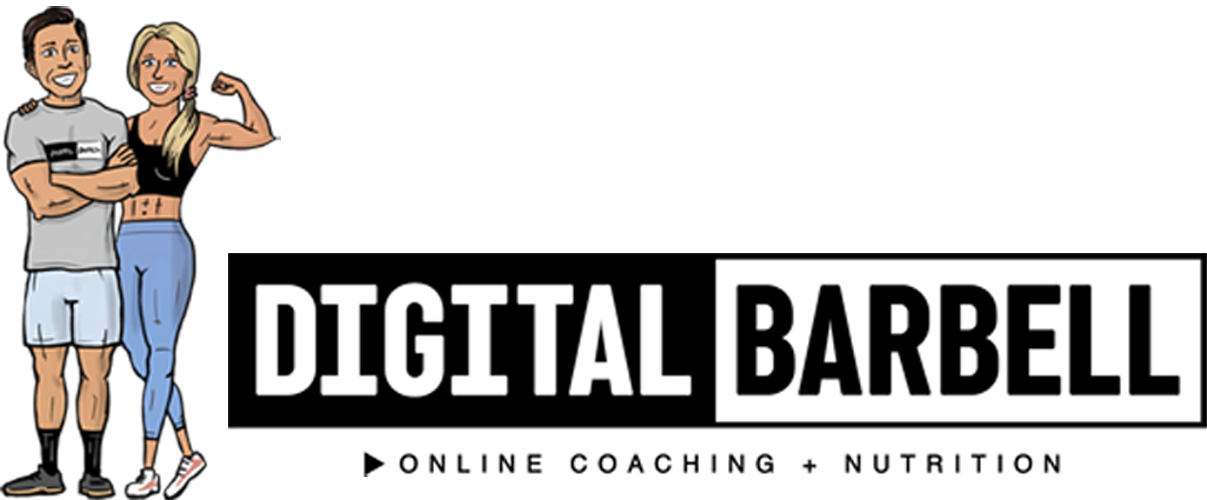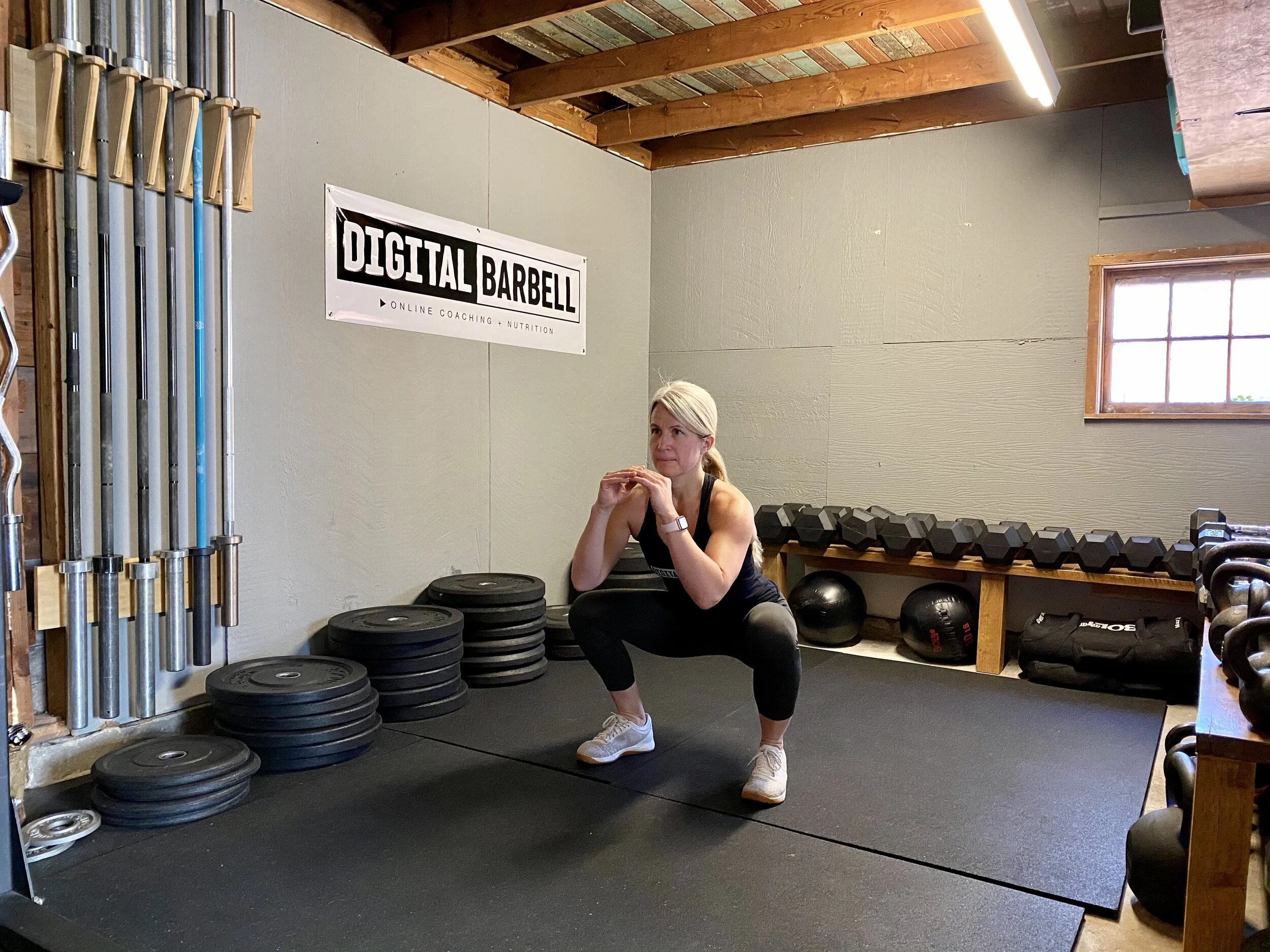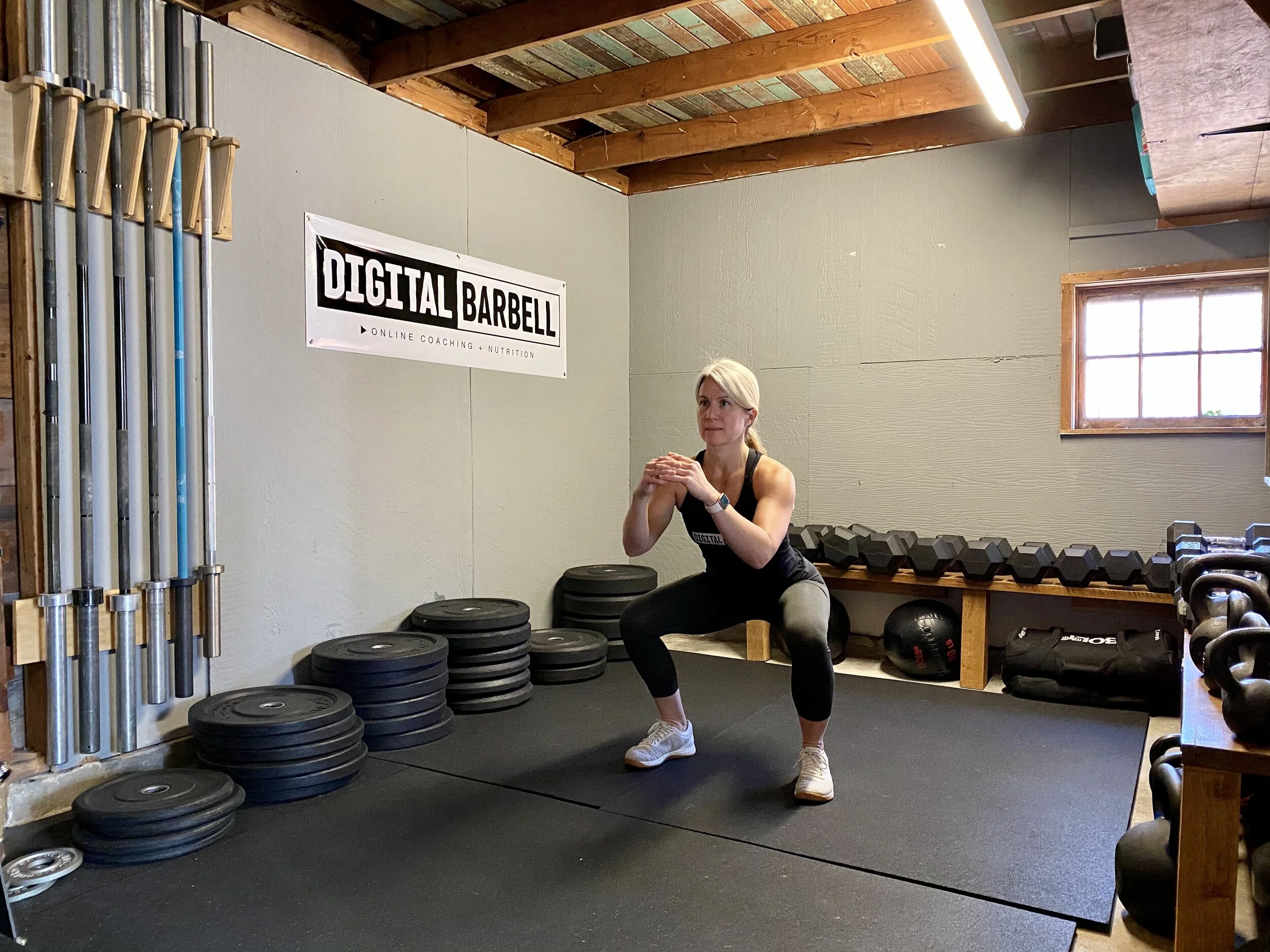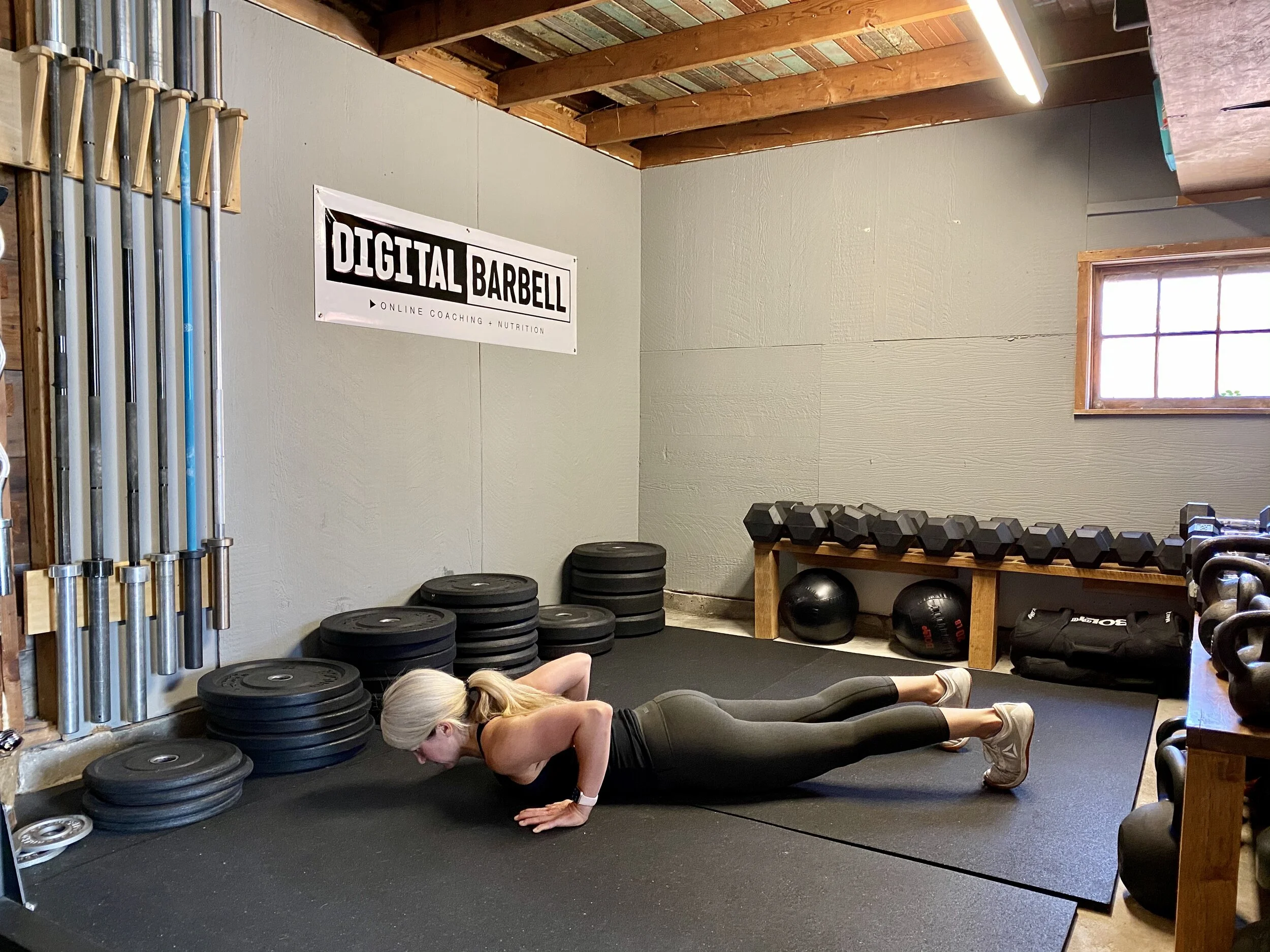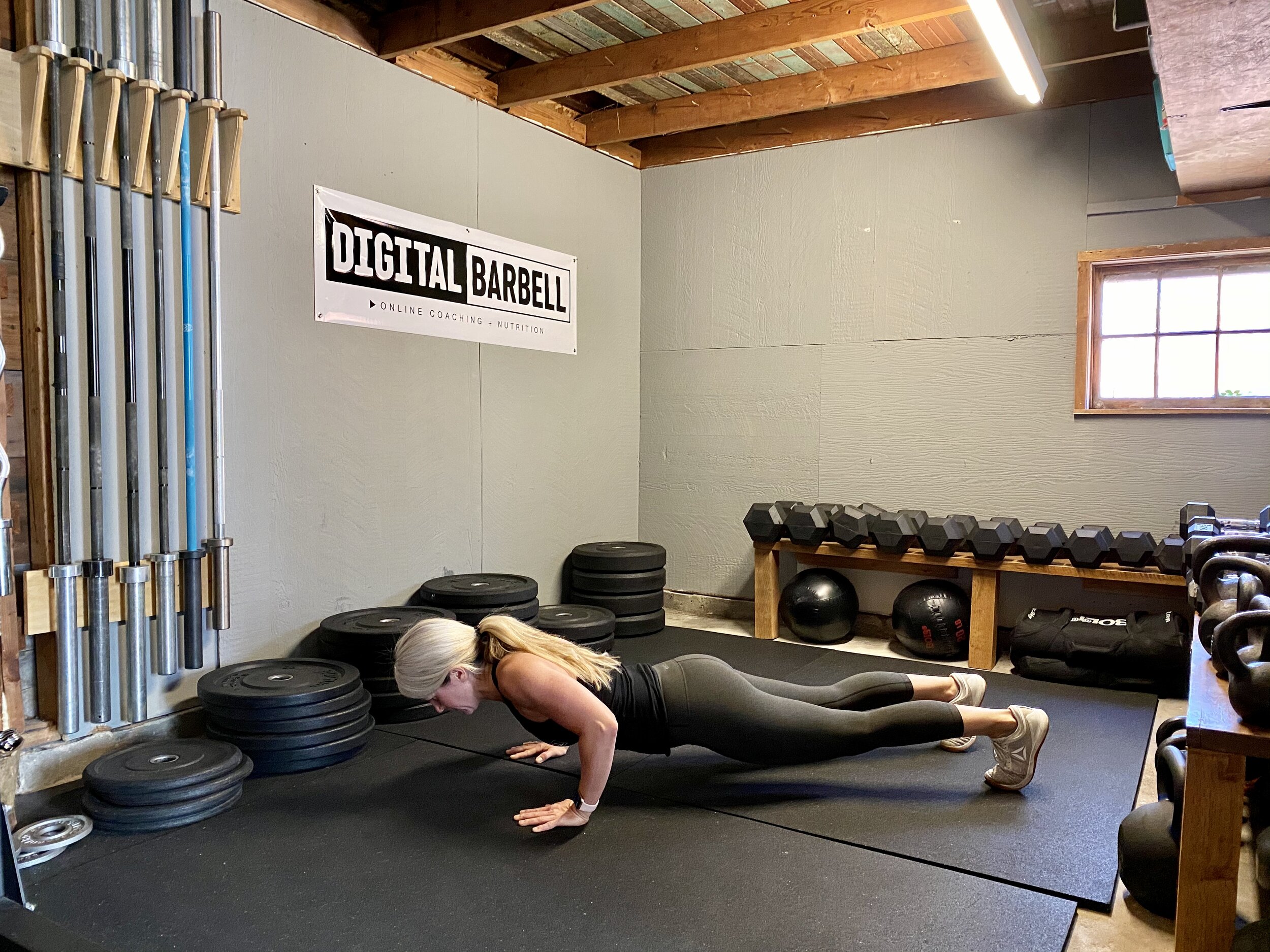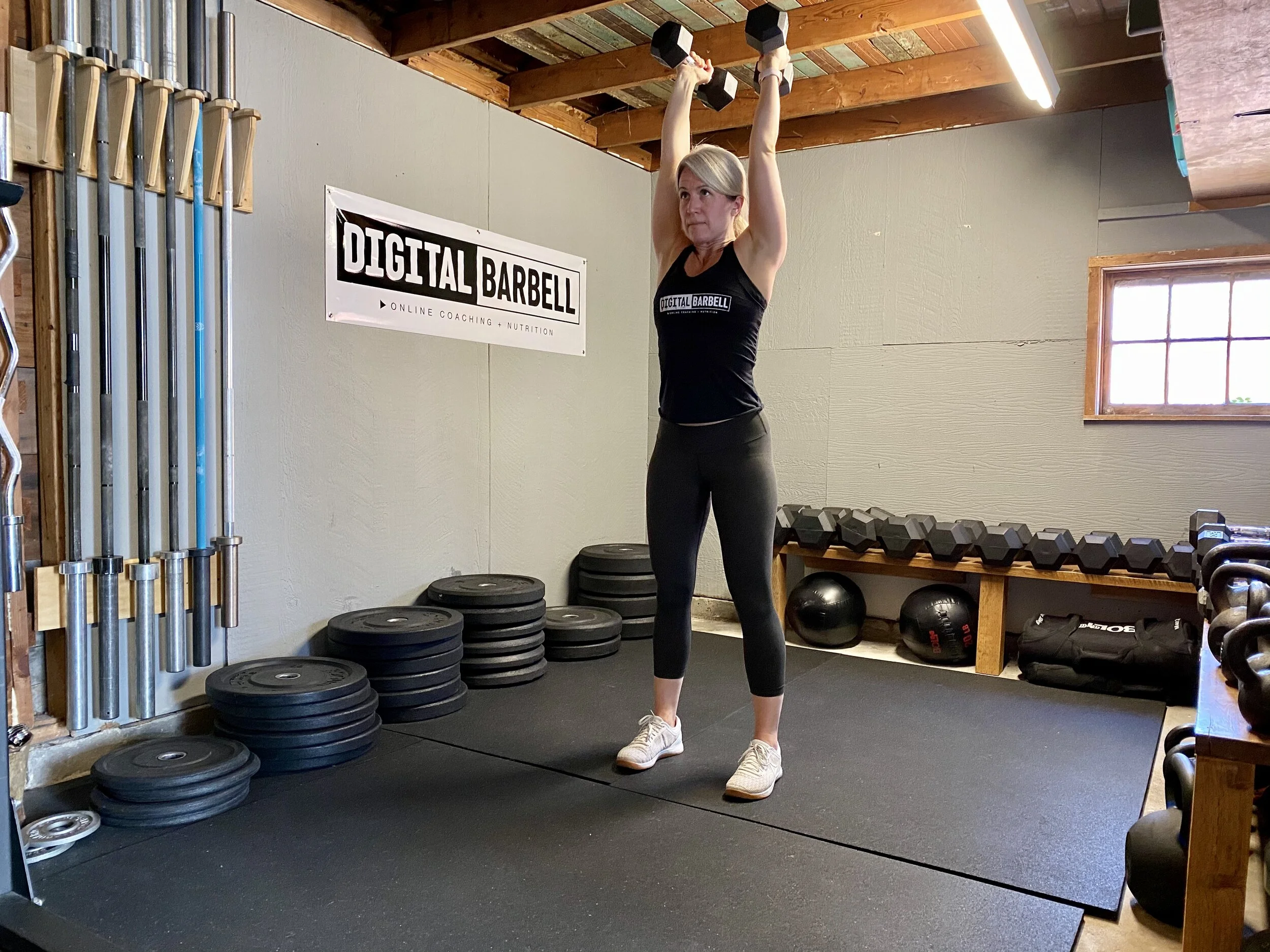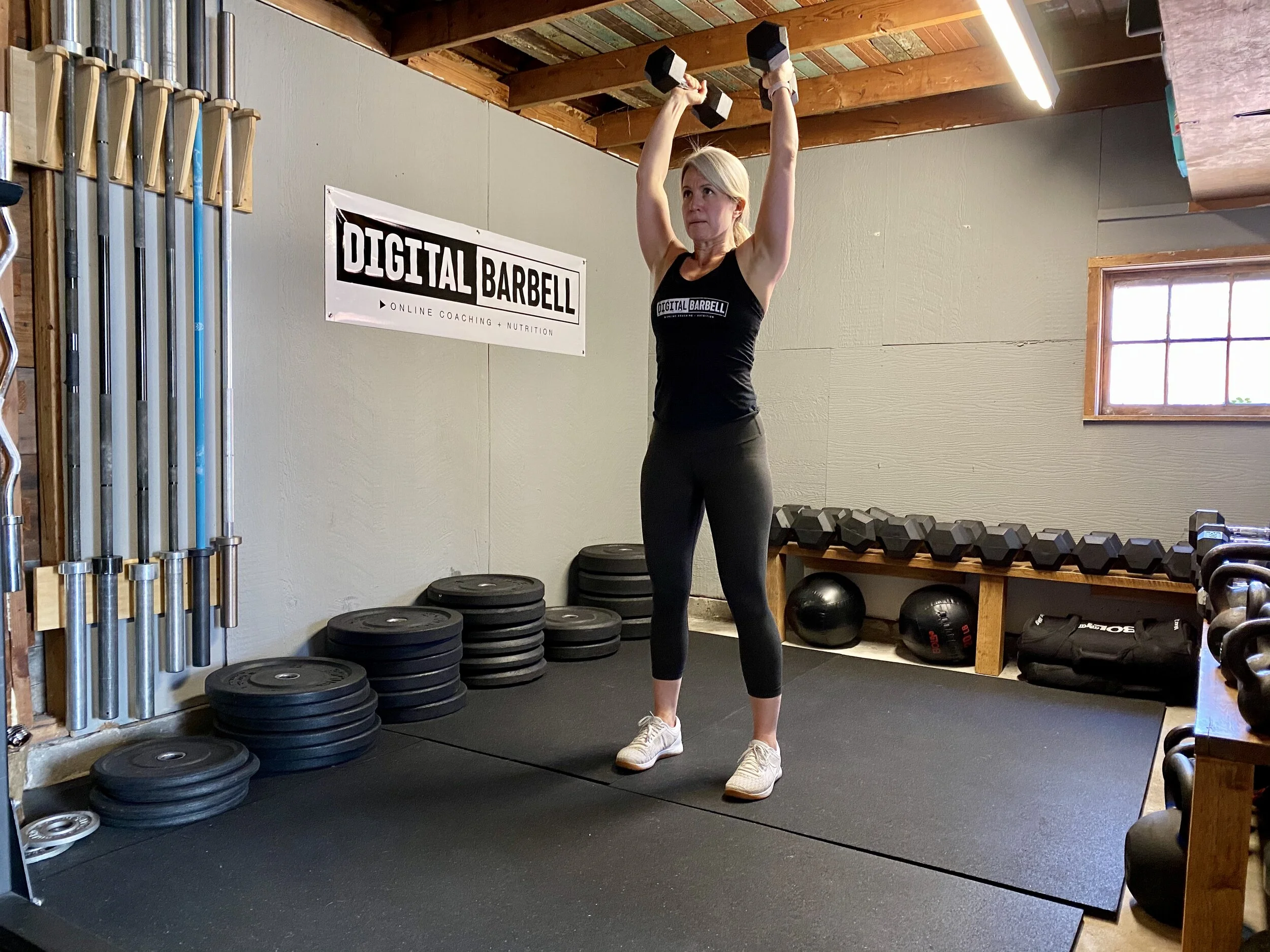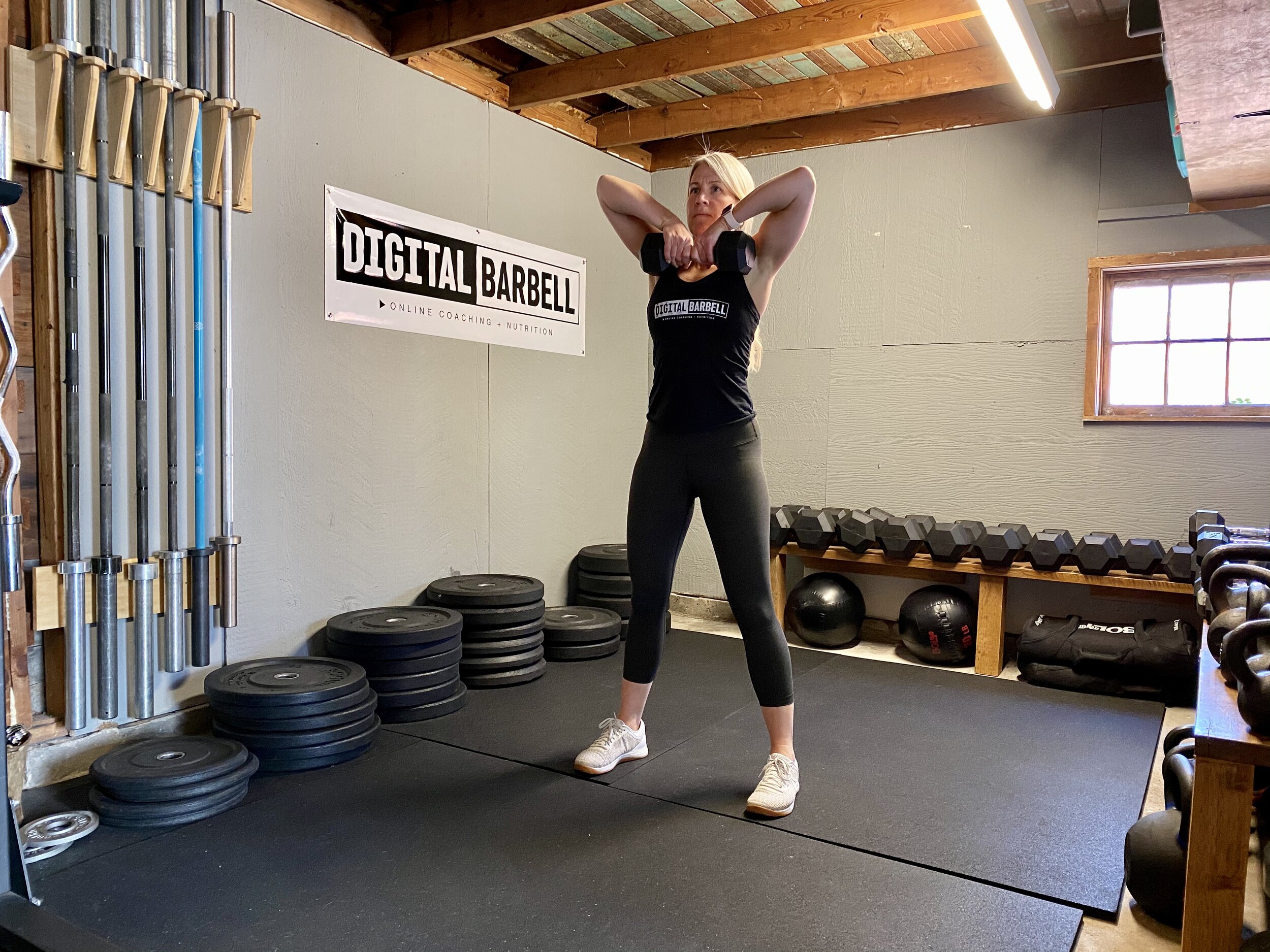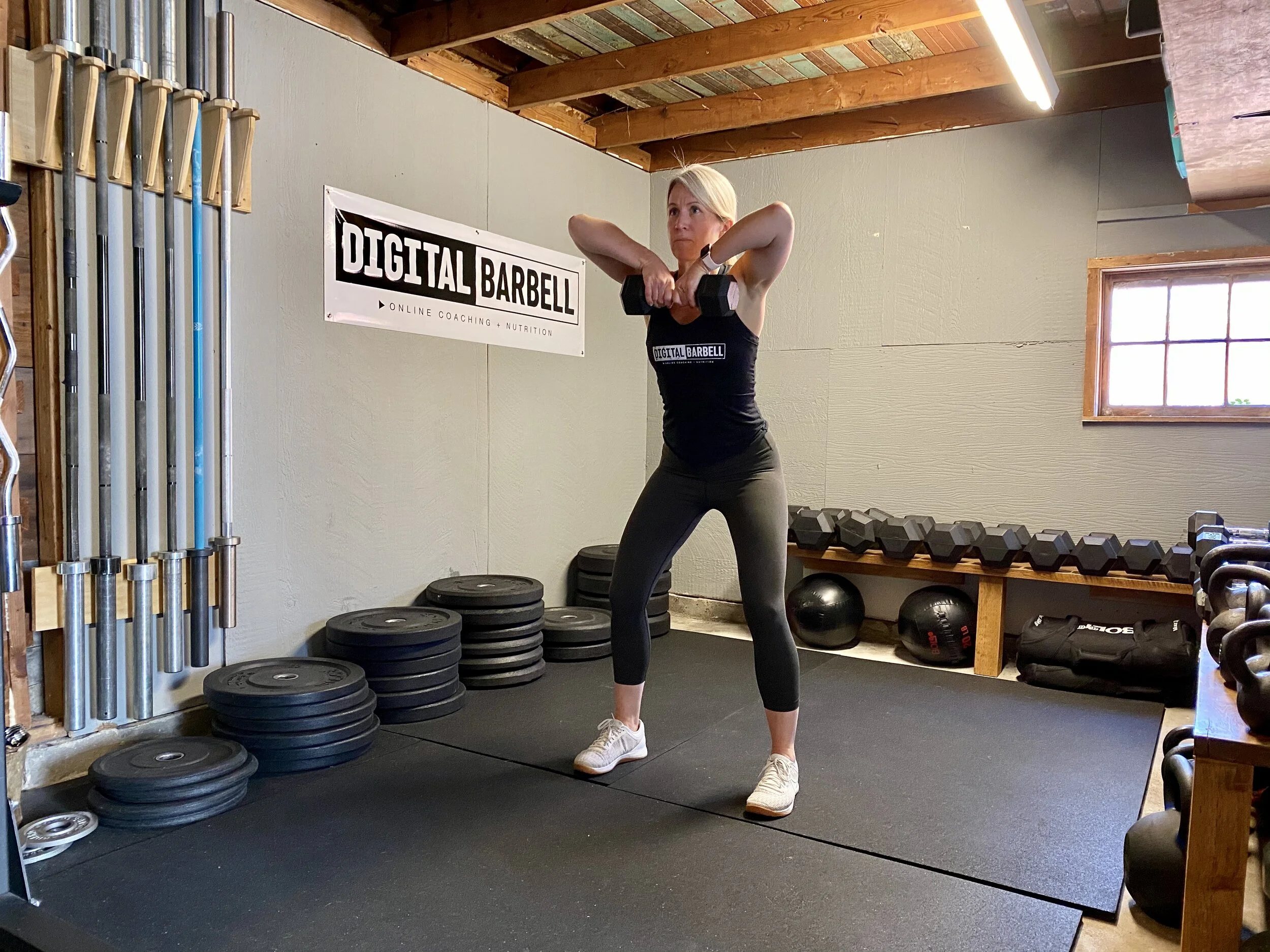How To Use Full Range of Motion To Avoid Injury and Build The Most Strength
Assuming you are healthy and able, we want (and insist on) you moving through FULL RANGES OF MOTION for each of your exercises.
But why?
Why do I insist on seeing video after video, making even the smallest corrections to your form?
I want to make sure you are moving WELL, SAFELY & EFFICIENTLY through the proper, full RANGE OF MOTION (ROM).
Moving through the full range of motion with good form develops strength in both your muscles & connective tissue. It helps build bigger, stronger, balanced muscles. Moving through the full range of motion also helps keep you safe by engaging the proper muscles in the proper order.
Let’s take a look at a few exercises, the proper ranges of motions for them and why.
Squat (weighted or unweighted)
Full Range of Motion: Hip Crease Below Knee Crease
Squatting Too High: Hip crease does not fall below knee crease
ROM: Hip crease below knee crease to full hips and knee extension
WHY: Squatting "below parallel" engages our biggest muscles and takes unnecessary force off of our knees. When our hip crease falls below our knee crease, our posterior chain goes to work. Our posterior chain muscles include our glutes, hips and our hamstrings. These large muscles are the ones we want to work to keep us safe and the ones we want to work to make us strong. If we squat to a position that is above our hip crease, our knees take a lot of the pressure to stand us back up. We aren't wearing these cute pants to show off our knees, are we?
Push Ups
Full Range of Motion: Chest and Thighs in contact with the ground at the bottom of the push up
Not low enough: Chest and Thighs not in contact with the ground at the bottom of the push up
ROM: Full arm extension to chest and thighs to the floor
WHY: Doing a push up from full extension all the way to the floor grows our muscles in the biggest range possible. If we short our push ups, we short the range in which we are growing those muscles. Enough said!
Shoulder Presses
Full Range of Motion: Full Shoulder & Elbow extension with ‘Active Shoulders’ pressed up toward ears
Shoulders Not Active: Shoulder and Elbow joints remain open and loose
ROM: The rep begins in the front rack with the dumbbells in contact with our shoulders and moves overhead to full elbow and shoulder extension.
WHY: Growing the muscle in the largest range possible AND more importantly keeping our shoulders safe! We end each press by shrugging our shoulders up toward our ears. Doing this puts the shoulder into a safer position by creating a little extra space in the already crowded shoulder joint. What we want to avoid are 'soft shoulders' at the top of our press where our shoulders and elbows are not full extended.
Sumo Deadlift High Pull
Full Range of Motion: Knee & Hips are open before dumbbell is pulled to the collar bone
Core to Extremity violation: Hips are not open before the weight is pulled to the collar bone
ROM: Weight moves from the ground to the collar bones. Moving in the right order is just as important as moving through the full range of motion.
WHY: If we 'pull too early' we use the wrong muscles. If we pull with our arms before our hips extend, we don't get the benefit of the power of our hips (which are much more powerful than our arms!). If we are pulling 'out of order' we don't get the most bang for our buck in the workout. We tire out faster and our intensity diminishes quicker.
These are just 4 examples of how and why full range of motion in your movements are important. If you ever have any questions about your own movement, ask us and we’ll take a look! You have our email address :)
